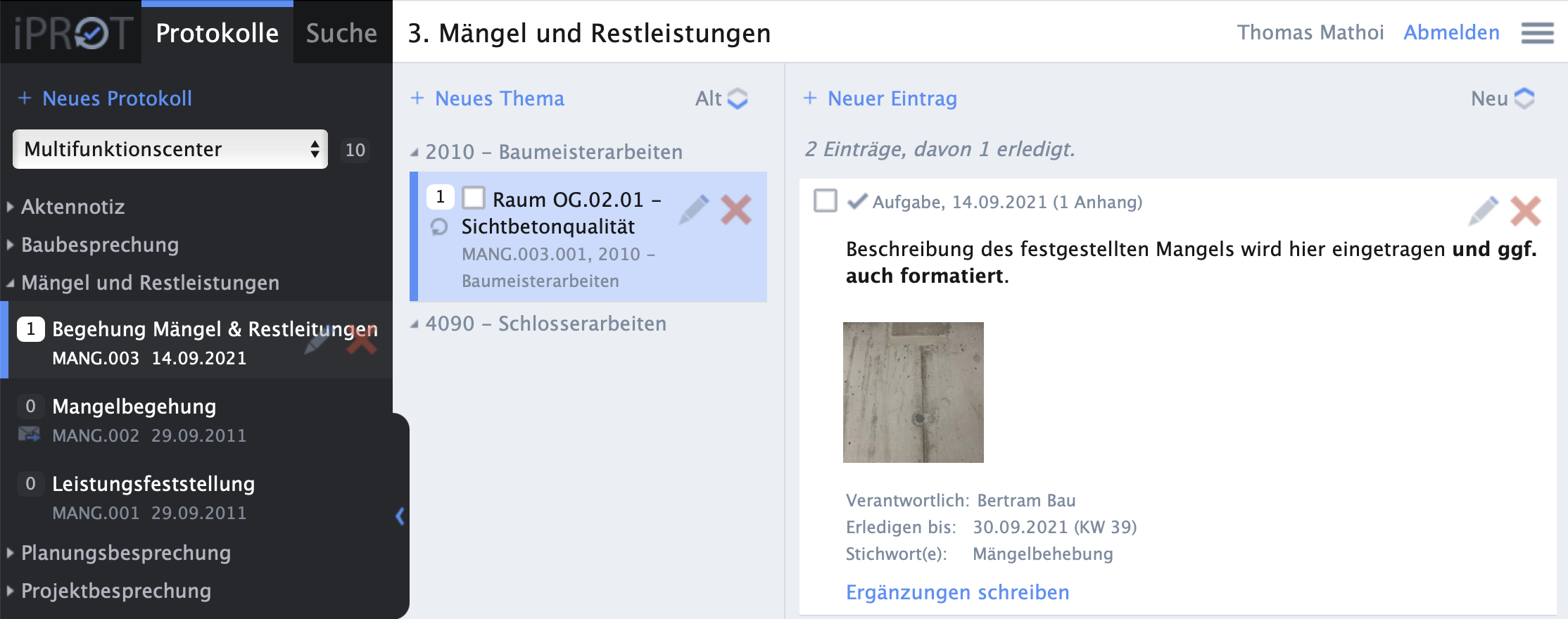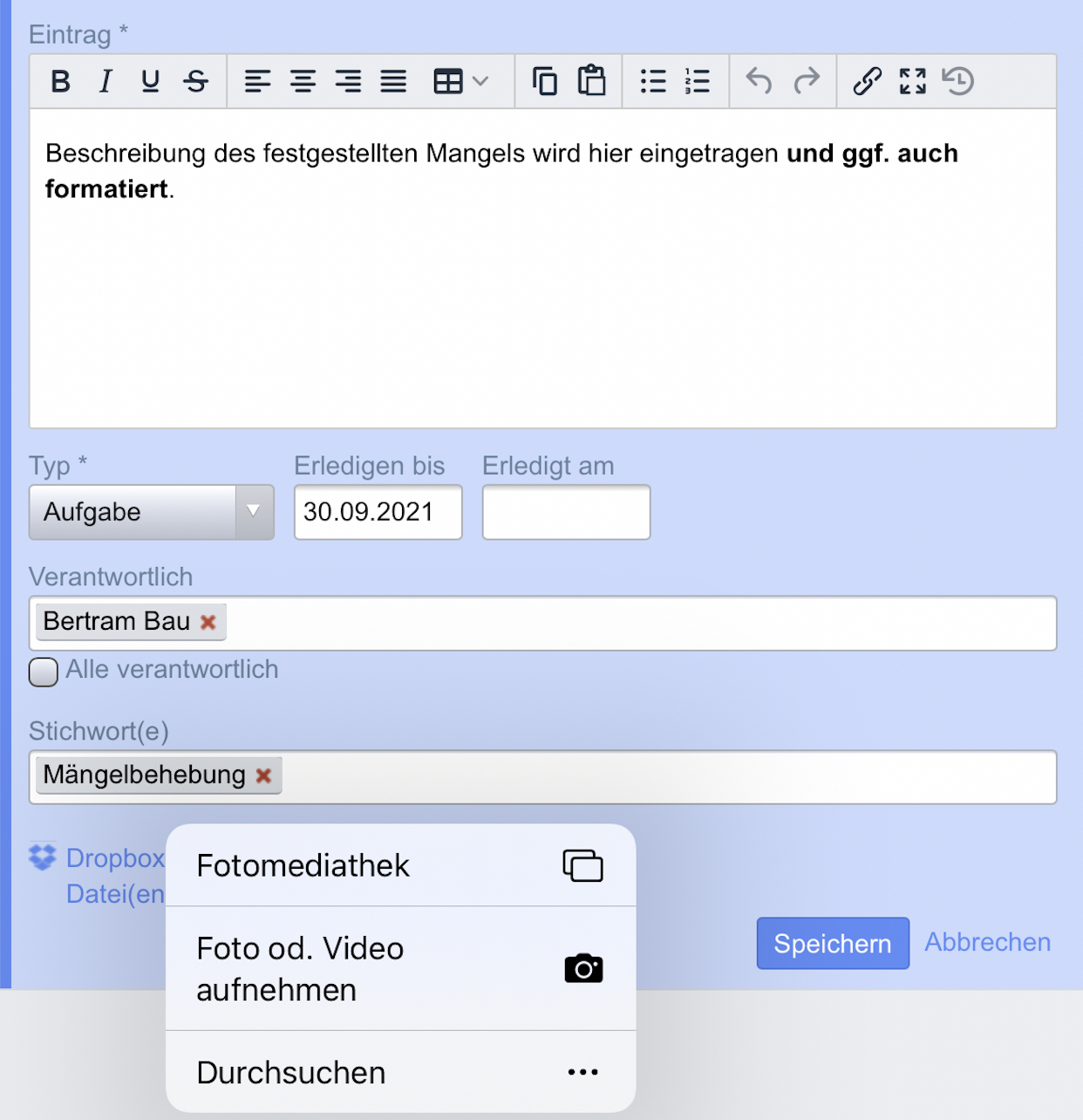
Protocol ideas part 6 – Site visit reports with iPROT
iPROT can be used to document not only the content of meetings in the form of minutes, but also inspections. An inspection is necessary, for example, on a construction site for the acceptance of a construction service or to determine the performance status and any defects. Or as part of facility management during the annual inspection of the fire alarm system in a building.
During the inspection, iPROT can be used to create an inspection report virtually live on a tablet computer. To do this, simply create the corresponding meeting type and then create the Meeting minute in your project, for example for an inspection to determine defects and remaining services.

If you write down the Meeting minute on a tablet computer during the inspection, you have the option of documenting the identified defects or missing services with a photo on site to illustrate them. You can then attach this photo to the respective entry.

iPROT uses the camera function integrated in the operating system of the tablet computer and makes this option available as soon as you click on the “Local file(s) …” link when creating an entry. The photo created in this way can then be attached directly to the respective entry without any detours. Of course, several photos can also be created in this way and added to an entry.
Once the inspection has been completed, the inspection report can be sent quickly and easily to the previously defined distribution list using iPROT’s integrated dispatch function. Alternatively, only the PDF version of the inspection report can be downloaded using the corresponding menu command.

Thanks to iPROT’s integrated endless logging method, no unfinished tasks, such as those required to rectify defects or outstanding work, are lost. And with iPROT’s supplementary function, the status can also be documented during a second inspection.
iPROT can be used in many different ways and goes far beyond simply recording the content of meetings. Of course, the logging ideas presented here are not exhaustive and we will therefore be happy to present further options for project documentation with iPROT when the opportunity arises and thus continue and supplement this blog series.
Other protocol ideas:
